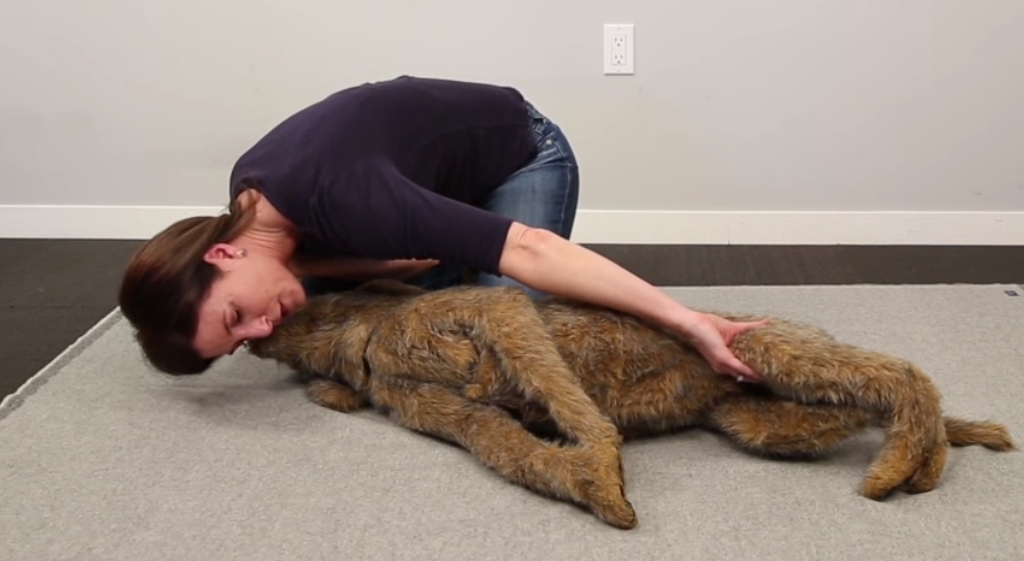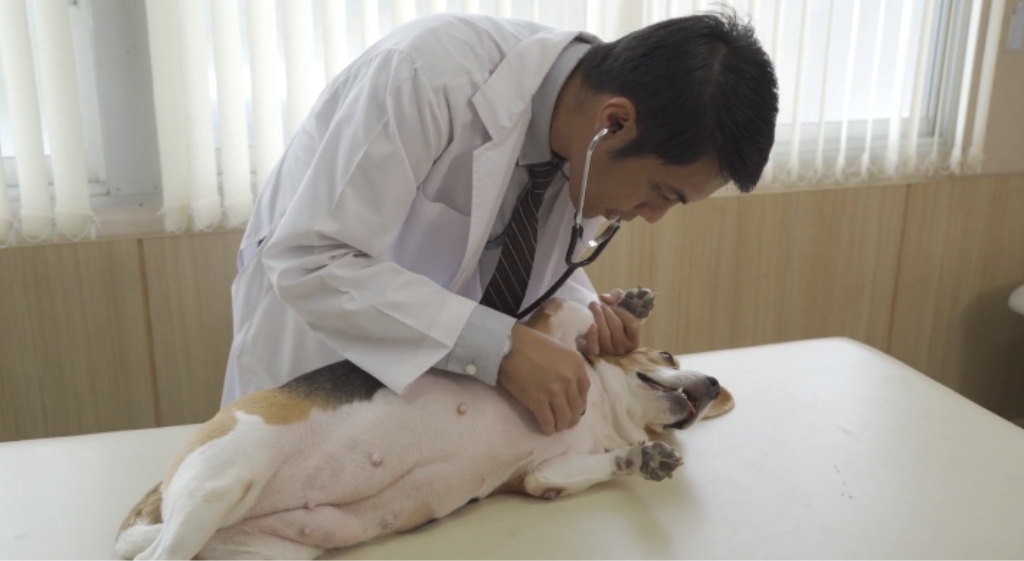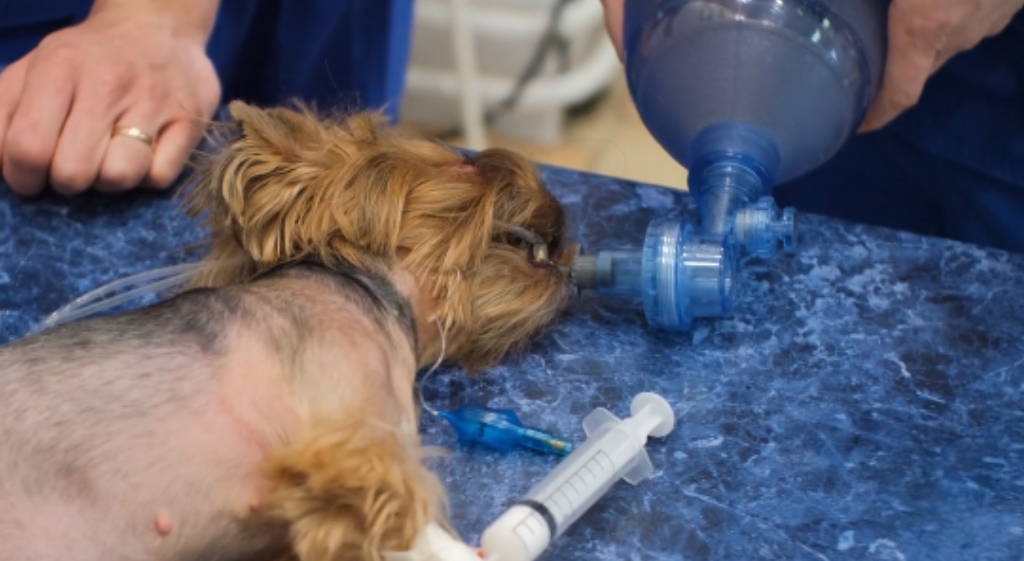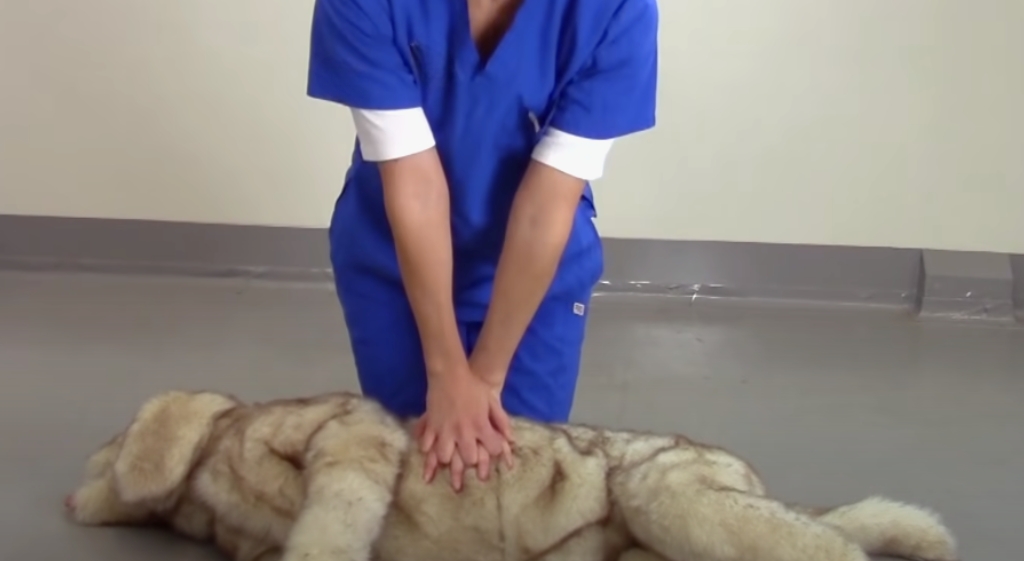Understanding how to perform cardiopulmonary resuscitation (CPR) on a dog can be a critical skill that saves a furry life.
The importance of knowing dog CPR cannot be overstated, as emergencies can arise unexpectedly, and the immediate response can mean the difference between life and death. This guide is designed for pet owners, dog lovers, and anyone who cares for dogs professionally or casually. It aims to provide a clear and concise step-by-step approach to administering CPR to canines in distress.
The purpose of this guide is to empower you with the knowledge and confidence to act swiftly and effectively should you ever encounter a situation where a dog requires CPR. By preparing yourself with these life-saving techniques, you can ensure that you’re ready to provide the best possible chance of survival for a dog in an emergency.
Preparing for Dog CPR
When faced with a potential canine emergency, your immediate action can be pivotal. That’s where MyCPR NOW comes into play—a mindset and readiness to jump into action at a moment’s notice. Before you begin, take a moment to ensure that the environment is secure for both you and the dog.
Look around for any potential dangers that could compromise your safety or further injure the dog. If you have access to personal protective equipment (PPE), such as gloves, don them to minimize the risk of disease transmission.
With the scene secure, it’s time to assess the dog’s condition. Approach the dog calmly and check for responsiveness. You can do this by softly calling the dog’s name or gently tapping its body. Observe the rise and fall of the chest to assess breathing, and try to feel for a pulse, preferably at the femoral artery located in the thigh.
Keep an eye out for any signs of distress, which could include gasping for air, a lack of pulse, or unconsciousness. These observations are critical—they will inform you whether CPR is necessary and how to proceed. With “MyCPR NOW,” you’re ready to take on the responsibility of potentially saving a dog’s life with the knowledge and urgency required.
Initiating CPR

To initiate CPR, first, establish an airway by clearing the dog’s mouth and throat of any obstructions. Carefully pull the tongue forward and sweep the mouth for debris. Then, extend the neck to create a straight path for air to travel to the lungs. This is crucial for effective rescue breaths.
Begin rescue breaths by closing the dog’s mouth and breathing directly into its nose. The mouth-to-nose technique is the recommended method for dogs, ensuring that your breaths are making the chest rise, indicating that air is entering the lungs. After providing two initial breaths, proceed to compressions.
Compressions are the next critical step. Place your hands on the widest part of the chest for large dogs or over the heart for smaller breeds. The rate of compressions should be 100 to 120 per minute, with the depth being one-third to one-half of the chest width. After every 30 compressions, give two more rescue breaths, and continue this cycle until there are signs of life or emergency help arrives.
In a real-life scenario, learning CPR skills from The Office’s unique approach could be as valuable as understanding how to administer canine CPR, as detailed in the step-by-step guide for saving lives with pets.
Monitoring and Adjusting
As you administer CPR, it’s essential to remain vigilant and continuously assess the dog’s condition. Look for any signs of improvement, such as spontaneous breathing or movement. These signs could indicate that the dog is responding to your efforts and regaining its own respiratory and circulatory functions.
On the other hand, it’s equally important to recognize when to stop CPR, especially if you’ve been performing it for an extended period without any signs of life, and professional help is not on the way or is delayed.
Adjusting your technique during CPR can be crucial, especially when dealing with different sizes and breeds of dogs. For small dogs and puppies, you may need to use less force during compressions and possibly use only one hand.
For larger dogs, you’ll need to use both hands and apply more pressure to achieve the necessary compression depth. In specific situations like choking or drowning, additional measures such as the Heimlich maneuver for dogs or clearing water from the lungs might be required before starting or continuing with CPR.
Getting Professional Help

Even as you perform CPR, it’s critical to call for emergency veterinary assistance as soon as possible. If you’re not alone, have someone else make the call while you focus on the resuscitation efforts. Once help is on the way, or if you need to transport the dog to the veterinarian yourself, ensure that you do so safely and without interrupting CPR more than necessary.
Upon arrival at the veterinary clinic, provide the staff with a thorough account of the situation and any interventions you’ve performed. This information can be vital for the veterinary team to understand the dog’s condition and tailor immediate treatment effectively.
Special Considerations
Certain dogs will require special considerations during CPR. Puppies and small dogs are more fragile and will need gentler compressions. Brachycephalic breeds, those with short noses like Bulldogs and Pugs, may have more complicated airway issues, and extra care must be taken to ensure their airways are clear.
Dogs with preexisting conditions, such as heart disease, may not respond to CPR in the same way as healthy dogs, and those suffering from heatstroke will need to be cooled down simultaneously while CPR is being performed.
As you explore the step-by-step guide to giving CPR to dogs, it’s interesting to unravel the lifesaving history and understand the origins of this technique, including the question of when CPR was invented, connecting both articles seamlessly.
Conclusion

Knowing how to perform CPR on a dog is a powerful skill that can make the difference between life and death. This guide has outlined the key steps to take when a dog is in need of resuscitation. Remember, while this guide provides valuable information, there is no substitute for formal training.
I encourage all dog owners and caretakers to seek out CPR training to be fully prepared to handle such emergencies. Your knowledge and quick action could save a precious life.
The information provided here is based on the RECOVER initiative’s evidence-based guidelines for veterinary CPR. For the most current and detailed information, it is recommended to refer to the RECOVER Guidelines or seek formal training. Being prepared for the unexpected is the best way to ensure you can provide the help a dog may need in a critical moment.














